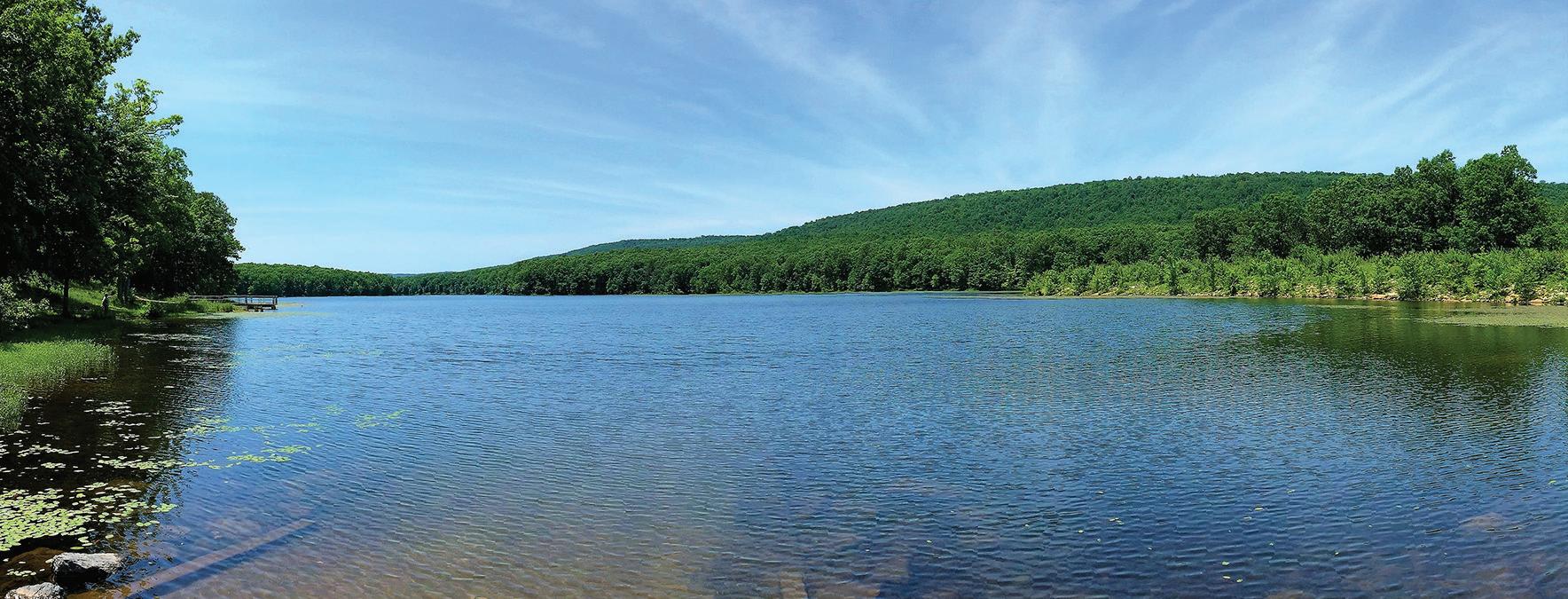
2 minute read
Civil War: Hunter’s Raid
With the help of Virginia Civil War Trails markers, you can travel the route of Hunter’s Raid and visit many sites associated with that 1864 raid. Starting in Staunton, visit Staunton National Cemetery where nearly 1,000 Union soldiers are buried, and then Thornrose Cemetery where nearly 2,000 Confederate soldiers rest.
Drive down I-81 to Lexington for the next leg of your search. Although the Virginia Military Institute Museum on the Civil War is temporarily closed, you can go downtown to Jackson’s restored home and then visit his gravesite at Stonewall Jackson Cemetery. Lee Chapel on the campus of Washington and Lee University is where Confederate Gen. Robert E. Lee is buried. The chapel also houses a memorial sculpture of the recumbent Lee, and a family crypt. From here you can meander down US11 as it passes over Natural Bridge, one of the natural wonders of the world. Stop to visit the bridge, and marvel at it just as the Union and Confederate soldiers did.
Advertisement
Your next stop is Buchanan, the place where Confederate General McCausland personally set fire to the covered bridge in the face of Hunter’s advancing army. After setting the fire, McCausland swam across the James River to safety as Union soldiers fired at him.
The stone pilings of the bridge still stand. From Buchanan you’ll pass through the Blue Ridge Mountains at the Peaks of Otter just where Hunter’s army did in1864. Beautiful mountain vistas await you at this junction with the Blue Ridge Parkway. Here you will find a lodge, visitor center, campground, picnic area and historic farm.
As you descend from the Peaks of Otter on Rt. 43, you will soon arrive in downtown Bedford. Visit the Confederate Monument in front of the Bedford County Courthouse and the Civil War exhibits at the Bedford City/ County Museum. Historic Avenel Plantation, center of the social, cultural and political life of Bedford for over 150 years, is one of the region’s treasures.
Halfway between Bedford and Lynchburg on US 460 you will come upon New London, the site of a sharp skirmish between Confederate cavalry and Union forces. Here the New London Academy was pillaged and ransacked during Hunter’s Raid. When you reach Lynchburg on Business 460 you’ll find the Quaker Meeting House. This ridge line marks the location of the fighting that took place June 17, 1864. It has been carefully restored to its 18th Century appearance.
Next you should visit Historic Sandusky. This Federal-era home was seized by Hunter and used as his headquarters during the Lynchburg battle. Tour the grounds and Civil War exhibits there. Hear scores of anecdotes and tales of the Union occupation there. In Lynchburg are three cemeteries, Old City Cemetery, Spring Hill Cemetery, and Presbyterian Cemetery, where many Civil War soldiers are buried. These include Generals Jubal Early, Robert Rodes, Sam Garland, and James Dearing along with over 2,200 Confederate soldiers from fourteen states who died in the Lynchburg military hospitals during the war.
Just twenty miles east of Lynchburg is Appomattox, the small village where Lee surrendered the Army of Northern Virginia, and the nation was reunited. The McLean house is where the surrender terms were signed. From there, drive over to Salem and visit the site of the Hanging Rock Battle, the last action of Hunter’s Raid. Enjoy the natural beauty of the mountains by hiking along the Hanging Rock walking trail.









